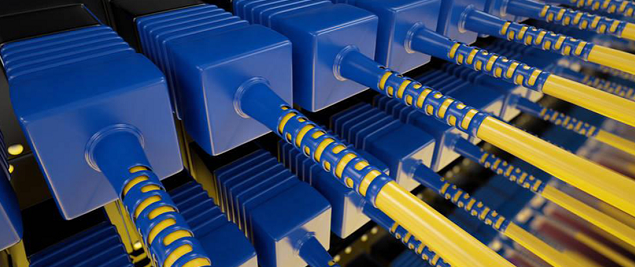News
Site Editor
 Site
https://leonetworkgroup.usa18.wondercdn.com/uploads/image/5fe152faa587d.png
Insertion loss is the amount of energy that a signal loses as it travels along a cable link. It is a natural phenomenon that occurs for any type of transmission—whether it's electricity or data. This reduction of signal, also called attenuation, is directly related to the length of a cable—the longer the cable, the greater the insertion loss. Insertion loss is also caused by any connection points along a cable link (i.e., connectors and splices).
Site
https://leonetworkgroup.usa18.wondercdn.com/uploads/image/5fe152faa587d.png
Insertion loss is the amount of energy that a signal loses as it travels along a cable link. It is a natural phenomenon that occurs for any type of transmission—whether it's electricity or data. This reduction of signal, also called attenuation, is directly related to the length of a cable—the longer the cable, the greater the insertion loss. Insertion loss is also caused by any connection points along a cable link (i.e., connectors and splices).
Insertion Loss for Fiber Optic Cabling System
Views: 2235
Author: Site Editor
Publish Time: 2021-12-03
Origin: Site
What is insertion loss?
Insertion loss is the amount of energy that a signal loses as it travels along a cable link. It is a natural phenomenon that occurs for any type of transmission—whether it's electricity or data. This reduction of signal, also called attenuation, is directly related to the length of a cable—the longer the cable, the greater the insertion loss. Insertion loss is also caused by any connection points along a cable link (i.e., connectors and splices).
Different types of losses in optical fiber
Intrinsic Optical Fiber Losses
Absorption losses in optical fiber cabling system are the major cause of optical fiber losses during the transmission. When the photon interacts with the components of the glass, an electron or metal ions, the light power is absorbed and transferred into other forms of energy like heat, due to molecular resonance and wavelength impurities.
Dispersion losses are the results of the distortion of optical signal when traveling along the fiber. Dispersion losses in optical fiber can be intermodal or intramodal. Intermodal dispersion is the pulse broadening due to the propagation delay differences between modes in multimode fiber. Intramoal dispersion is the pulse spreading in single mode fiber, because the refractive index or the propagation constant varies with wavelength.
Scattering losses in optical fiber are due to microscopic variations in the material density, compositional fluctuations, structural inhomogeneities and manufacturing defects.

Extrinsic Optical Fiber Losses
Fiber optic splicing is another type of loss in optical fiber. By joining two optical fibers end-to-end, splicing aims to ensure that the light passing through it is almost as strong as the virgin fiber itself. But no matter how good the splicing is, the splicing loss is inevitable. Fusion splicing losses of multimode fiber are 0.1-0.5 dB, 0.3 dB being a good average value. For single mode fiber, the fusion splicing loss typically can be less than 0.05 dB.
Connector losses or insertion losses in optical fiber, are the losses of light power resulting from the insertion of a device in a transmission line or optical fiber. Multimode connectors will have losses of 0.2-0.5 dB (0.3 typical). Factory made single mode connectors will have losses of 0.1-0.2 dB and field terminated single mode connectors may have losses as high as 0.5-1.0 dB (0.75 dB, TIA-568 max acceptable).
Bending is the common problem that can cause optical fiber losses generated by improper fiber optic handling. There are two basic types. One is micro bending, and the other one is macro bending (shown in the picture below). Macro bending refers to a large bend in the fiber.
Why is understanding insertion loss important?
It is important to know the insertion loss of the products you are using or considering purchasing to ensure you stay under your loss budget. Be sure to ask for insertion loss specifications before purchasing cables.
Pay attention to words like typical versus maximum insertion loss. Some manufacturers will supply statistics in typical readings or averages. This should not be considered a number to use - you may end up getting cables that are well above the average.
Instead, you should look for the maximum insertion loss of a product. This allows you to know the highest possible loss amounts that you will incur.
Problems come up. If you have exceeded your loss budget and don’t realize it, symptoms of this may not be straightforward. The result of this could be hours of troubleshooting time.
Like golf, the lower the cable’s dB loss rating, the better. A cable with a maximum dB loss of 0.15 (CABLExpress LC jumper) will dramatically outperform a cable with a maximum dB loss of 0.3.
For more information, please contact us immediately. As a professional fiber optic system supplier, we are happy to help you.
If you want to know more about industrial network cabinet,china fiber optic splice closure,china fiber optic distribution box,please consult the fiber optic splice closure factory




